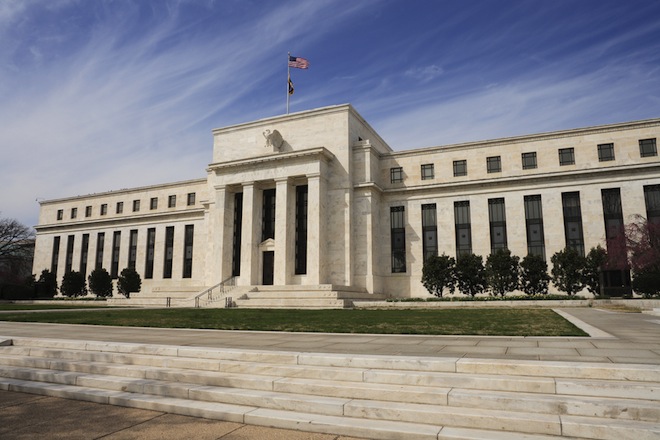Here are the latest news items and commentary on current economics news, market trends, stocks, investing opportunities, and the precious metals markets. We also cover hedges, derivatives, and obscura. And it bears mention that most of these items are from the “tangibles heavy” contrarian perspective of SurvivalBlog’s Founder and Senior Editor, JWR. Today’s focus is on the Fed’s QE Unwind. (See the Economy & Finance section.)
Precious Metals:
Gold Bounces Off Lows Following ‘Dovish’ Comments From Powell
o o o
Cliff Droke: Gold’s Safety Factor Kicks Into High Gear
o o o
Wall St., Main St. Bullish On Gold Despite Jobs Data
Economy & Finance (Fed’s QE Unwind):
At Wolf Street: Fed’s Balance Sheet Reduction Reaches $402 Billion. Here is a quote: “The QE unwind has started to rattle some nerves. For the past two months, the sound of wailing and gnashing of teeth about the Fed’s QE unwind has been deafening. The Fed started the QE unwind in October 2017. As I covered it on a monthly basis, my ruminations on how it would unwind part of the asset-price inflation and Bernanke’s “wealth effect” that had resulted from QE were frequently pooh-poohed. They said that the truly glacial pace of the QE unwind was too slow to make any difference; that QE had just been a “book-keeping entry,” and that therefore the QE unwind would also be just a book-keeping entry; that QE had never caused any kind of asset price inflation in the first place, and that therefore the QE unwind would not reverse that asset-price inflation, or whatever.
But in October last year, when all kinds of markets started reversing this asset price inflation, suddenly, the QE unwind got blamed, and the Fed – particularly Fed Chairman Jerome Powell – has been put under intense pressure to cut it out.”
o o o
Millions could face severe cuts to food stamps due to government shutdown
o o o
And at Bloomberg: Markets Signal 2019 Focus Will Be Fed’s Balance-Sheet Unwind
Stocks:
Next, at Seeking Alpha: The Fed Apologizes, And The Outlook Improves
o o o
A view from China: Stock Market Volatility Likely to Continue in 2019, Impacting Luxury Brands
o o o
And from the USA Today cheerleaders: Where are stocks headed in 2019? Wall Street pros are calling for a rebound
Tangibles Investing:
Tam of the View From The Porch blog suggested this article on a particularly overlooked muscle car: Collectible Classic: 1973-1975 Pontiac Grand Am. One of the best Detroit muscle cars.
o o o
Speaking of overlooked muscle cars, see: 33 of the Most Underrated, Overlooked & Underappreciated Muscle Cars
Provisos:
SurvivalBlog and its Editors are not paid investment counselors or advisers. Please see our Provisos page for our detailed disclaimers.
News Tips:
Please send your economics and investing news tips to JWR. (Either via e-mail of via our Contact form.) These are often especially relevant, because they come from folks who particularly watch individual markets. And due to their diligence and focus, we benefit from fresh “on target” investing news. We often get the scoop on economic and investing news that is probably ignored (or reported late) by mainstream American news outlets. Thanks!











Precious metals buyers should ignore all the talk of where prices are going in the nex days, months, or for 2019. You don’t buy gold as a short term investment, folks. You buy it to protect your wealth during a financial crisis, when all other assets (temporarily or permanently) have no value. If the crisis is one that will end (2008, for example), then you want to sell your metals in the depths of the crisis and buy assets that will go back up afterwards. Metals will spike back down as the crisis ends, and owners may well have been only temporarily wealthy. Knowing when the depth has arrived — well, that won’t be easy, but the classic statement “wait for blood in the streets” should be a guideline. What to buy: stocks, land, rental property, businesses.
And, as we move out of the crisis, and metals prices spike back down, start accumulating again.
Of course, if the crisis has a long term dimension — EMP, civil war, etc. — then the above would not hold and using your metals for long term survival would be the preferred approach.
The QE unwind means that the Fed is selling the securities it bought from banks and investment houses during and after the 2008 crisis. By increasing the market supply, the prices of these and similar securities drop to some extent. When the prices of these securities drop, their interest rates go up. Thus, the Fed is both raising rates directly and pushing them up by its sales.
The effect is like driving your car with the emergency brake partially engaged. The economy is doing fine at the present moment, but the Fed seems bent on screwing it up. Remember that they’re only selling this stuff so they can buy it back in another crisis — which they may create by their sales!